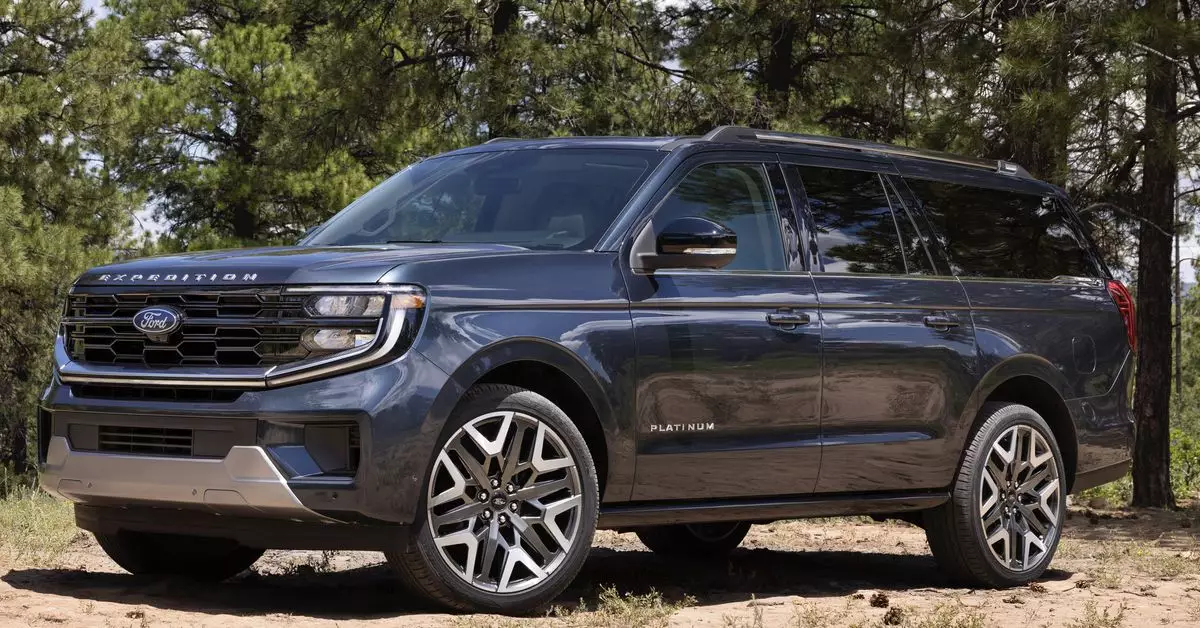Ford has made a significant move with the launch of the redesigned 2025 Expedition, aiming to refresh its largest SUV offering while integrating advanced technology. The introduction of the brand-new Digital Experience infotainment system, based on Android Automotive, represents a step forward in Ford’s digital evolution. Following the path blazed by the new Explorer, the Expedition’s dashboard features a simplified version of the impressive panoramic display that debuted in the 2024 Lincoln Nautilus. While the Lincoln model boasts a luxurious 48-inch screen, the Expedition presents a more compact, 24-inch display on the left side, positioning itself as a more utilitarian option rather than a high-end counterpart.
The 2025 Expedition’s interface maintains a user-friendly structure, presenting an instrument cluster and navigation system directly in front of the driver, mirroring the layout found in its pricier sibling. However, it lacks some of the enhanced widget capabilities seen in the Lincoln’s more extensive display, possibly limiting the breadth of at-a-glance information available for drivers. Beneath the primary display, a smaller touchscreen provides essential functionalities such as digital climate controls and access to Google Play Store apps. Additionally, integration with Apple CarPlay allows for a seamless connection to users’ devices, appealing to the tech-savvy consumer. Ford’s decision to include voice assistants—Google Assistant and Alexa—though limited to one at a time, enhances the driving experience by simplifying commands, allowing drivers to keep their focus on the road.
Inside the new Expedition, space and comfort are not neglected. Ford provides flexibility with seating arrangements, offering both bench and captain’s chairs in the center row. An impressive feature is the innovative smartphone and tablet clamps located at the back of the first-row headrests, catering to rear-seat passengers who want to stay entertained during long journeys. With the capability to comfortably accommodate up to eight passengers when opting for the bench seat, families will appreciate this design flourish, which mirrors a contemporary need for versatility in vehicles.
Performance-wise, the Expedition aligns closely with its design principles. Both the standard and extended “Max” versions retain a robust 3.5-liter EcoBoost V6 engine, a nod to Ford’s performance heritage. The introduction of a new Tremor trim brings off-road capabilities to the forefront, delivering up to 440 horsepower and specialized trail modes, expanding the vehicle’s appeal to adventure seekers. However, the absence of a hybrid powertrain option may be seen as a drawback for environmentally conscious consumers who are increasingly looking for greener alternatives in large SUVs.
In summation, the redesigned 2025 Expedition represents an intriguing blend of functionality, modern technology, and family-friendly features while striving to uphold Ford’s legacy in the SUV market. By not merely mirroring the Lincoln Navigator’s luxuries but adapting them for a broader audience, Ford is strategically positioning the Expedition within a competitive segment. Though it offers substantial upgrades, potential buyers may still seek the advanced eco-friendly options that are becoming standard in the industry. As trends evolve, the 2025 Expedition stands as a testament to Ford’s balance of traditional values with modern needs, setting the stage for a new chapter in the brand’s SUV lineage.


Leave a Reply